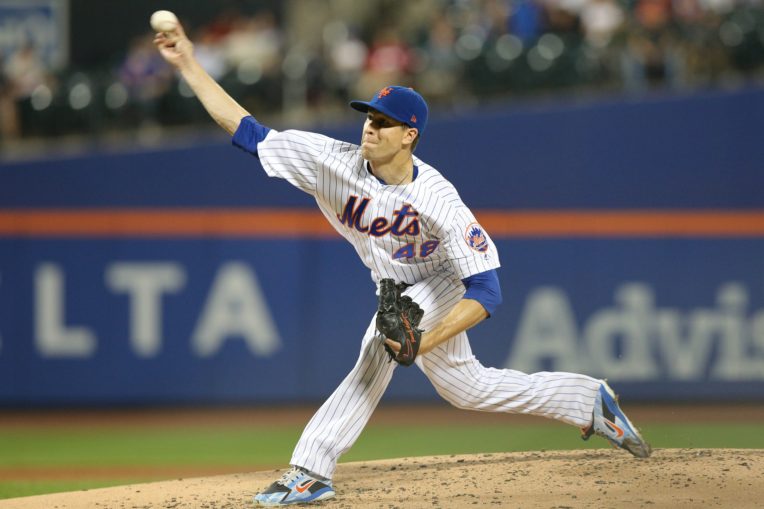
Jacob deGrom should be the unanimous Cy Young candidate. To vote against him would be silly after one of the single greatest pitching seasons of all time—deGrom’s ERA+ (ERA adjusted for league and park factors and normalized) was the twenty-second best in the 148-year history of organized baseball. I could vomit facts about deGrom’s transcendental 2018 season all day long, but what I’m more concerned with is the nature of the transcendental season. It was, for all intents and purposes, a breakout: deGrom was thirty years old with four seasons already under his belt, and while all of them were excellent seasons, none of them had shown that a season of this caliber was a realistic outcome for deGrom entering this season. So the question remains—how does a pitcher like deGrom, who has recently found himself on the wrong side of the aging curve and has a great-but-not-godly track record break out in such a way?
I’ll start by addressing the elephant in the room: Luck. Naturally, when a player starts performing well above their previous level of performance, there is some degree of luck involved. deGrom’s HR/FB—the rate at which fly balls against Jacob deGrom leave yard – was a mere 6.3%, the lowest in the MLB among qualified starting pitchers and about 4% below deGrom’s career average. HR/FB is usually cited as an example of a stat that measures luck (to the degree that an entire stat—xFIP—was created around this notion).
But HR/FB% is not quite wholly luck based. In 2018 deGrom saw his soft contact on fly balls spike ~10% up from previous season, and his hard contact dropped to the lowest rate of his career. This, coupled with Citi Field’s apparent HR suppression (according to ESPN’s park factors, Citi Field was 21st of 30 parks in terms of HR park factors), helped deGrom post the lowest HR/9 of his career. Considering how deGrom’s soft contact rate spiked across the board, that HR/FB figure looks a lot less flukey.
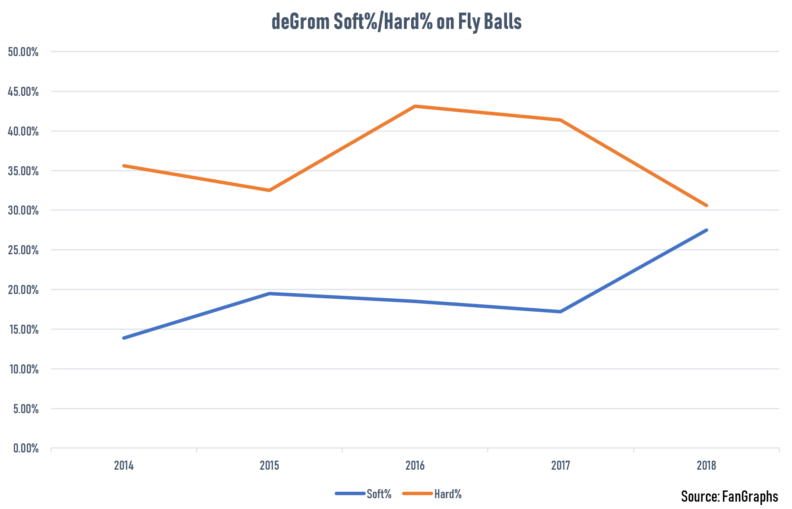
Where is the weak contact coming from? According to Baseball Savant, deGrom has seen his average exit velocity allowed on fastball drop by two miles per hour, and his changeup (which saw an uptick in use from 12.2% in 2017 to 15.8% in 2018) dropped by 1 MPH.
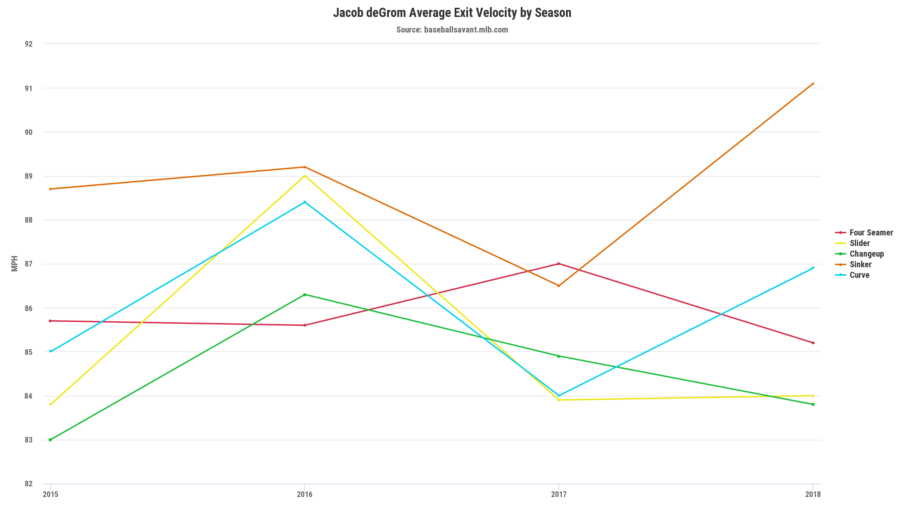
The big drop-offs in exit velocity come might come from deGrom’s significant uptick in velocity from last season: deGrom’s fastball velocity rose from 95.2 MPH to 96.0 MPH, his changeup velocity rose from 87.6 MPH to 88.9 MPH, and his slider (which generated a whiff 36% of the time it was thrown) rose from 89.3 to 91.1 MPH last season—the fastest on record, according to FanGraphs (h/t Mike Mayer). High pitch speeds lead to softer contact, so deGrom’s spike in velocity helps account for the softer contact and indicates that as long as deGrom can keep up his pitch speeds, he can keep up his incredible rate of home run suppression to some degree.
deGrom also stranded 82% of runners who reached against him, which helped lower his ERA to such a historically low level. That figure was 10% above league average and 4% better than league average. Again, LOB% is typically cited as a “luck” based stat, with players who perform above average generally subject to regression. But there is still a considerable skill component involved in the stat, and strikeout pitchers tend to record better LOB% than their peers. deGrom saw his strikeout numbers spike significantly in 2017, and the trend continued in 2018. deGrom has historically run better strand rates than his peers, so if the uptick in strikeout rate is sustainable, so could his strand rate to a degree. deGrom gets his strikes from getting batters to go fishing—deGrom’s strikeout rate has risen and fallen with his O-Swing% consistently.
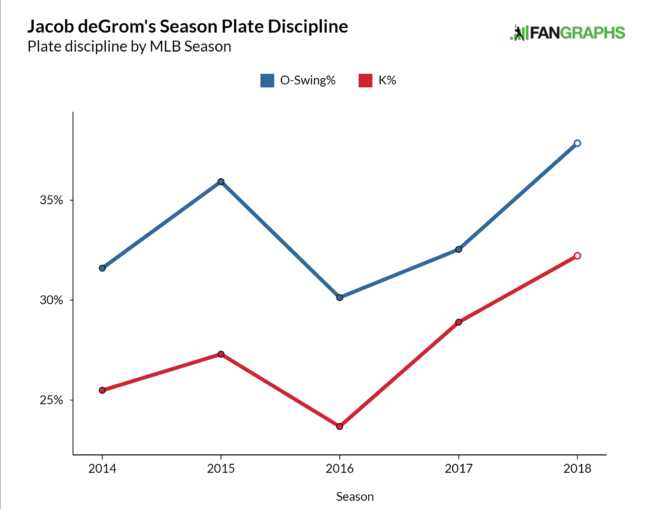
So getting batters to chase has been the recipe for success for deGrom. What has he been doing differently? For starters, he’s been using his slider more often—according to FanGraphs, deGrom’s slider usage jumped 5% from 2016-2017, and increased again (slightly) in 2018. deGrom has been using his slider as his wipeout pitch against left-handed hitters. According to Brooks Baseball, against left-handed hitters, deGrom throws his slider just 20% of the time, but that spikes to 31% with two strikes. deGrom has begun relying more heavily on the slider as his finisher against left-handers, and it’s been incredibly effective—here are deGrom’s swings and misses on the pitch in 2018. Notice how deGrom frequently goes down-and-in—given how fast his slider is coming in and how effectively he’s been able to hit the corner of the plate, it’s almost impossible to protect.
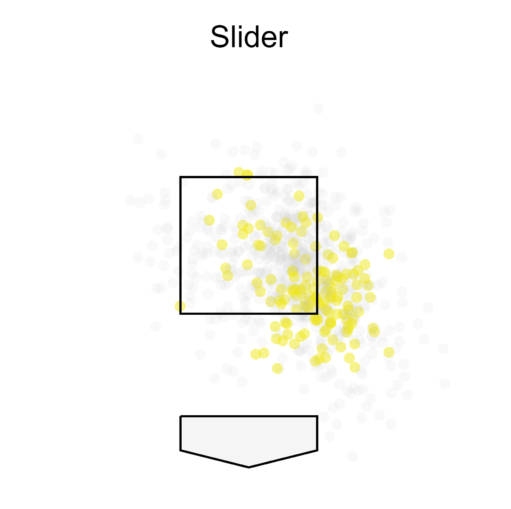
Lefties were hitting .239/.295/.364 with a 24.8% K% against deGrom entering this season, but they hit just .219/.267/.312 with a 29.5% K% in 2018, in part because deGrom was able to effectively use his slider to generate whiffs on two-strike counts.
Against right-handers, deGrom doesn’t rely usually on one particular trick—rather, a variety of tools. deGrom leads with either a fastball (48%) or a slider (31%) against righties and generates strikes by going down and away with the slider or coming up-and-in with his rising fastball. Of pitchers with at least 1000 fastballs this season, only Jake Odorizzi keeps his fastballs higher than deGrom, and by mixing in his changeup more frequently (deGrom’s changeup usage spiked 3.7% from last season), deGrom can fool hitters into guessing the wrong height for the pitch to come in, or simply keep them from catching up to it.
And all this, again, is augmented by the fact that deGrom is throwing harder than ever before—at age 30, no less. Where did the velocity come from? Before the season, deGrom said that he expected that his haircut would add two MPH to his fastball—but I’d be far more inclined to instead blame deGrom’s new reliance on throwing two abbreviated bullpen sessions between starts, as opposed to one long one. I don’t know when deGrom began the habit, but evidently, Noah Syndergaard copied deGrom at some point before September of 2018, and it’s of note that Syndergaard saw his velocity increase or stay the same on almost all of his pitches by a significant margin after the All-Star break.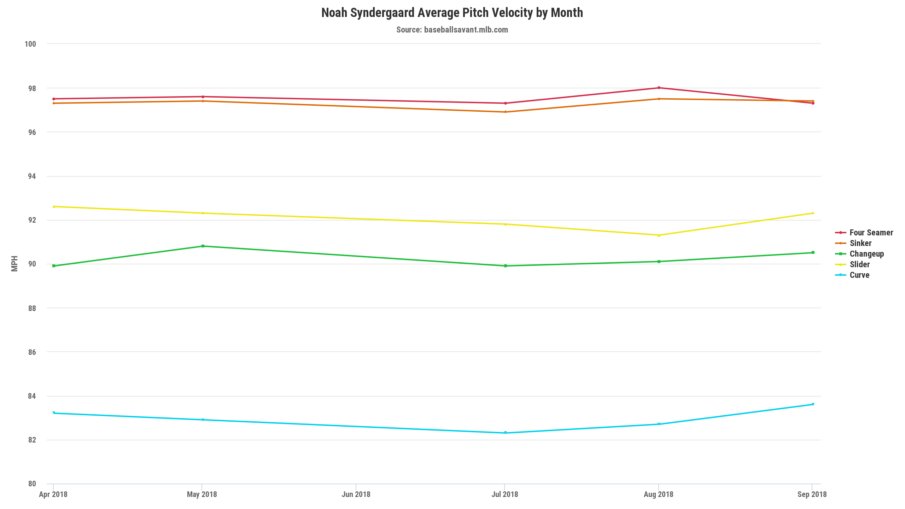
I’m more inclined to believe that the double-bullpen sessions are helping deGrom and Syndergaard throw harder than their luscious locks (or lack thereof).
deGrom will probably regress next season. He probably will not put up 10-ish WAR, he probably will not give up a super-humanly amount of earned runs, and he probably will not strike out almost 270 hitters. But it’s impossible to ignore what happened this season, and it’s impossible to go back to thinking of deGrom as the “ace but not as good as Max Scherzer/Clayton Kershaw/Chris Sale” type. This season changed everything. He’s up there with the best pitchers in the game, and he’s armed with all the tools to maintain his dominance.















